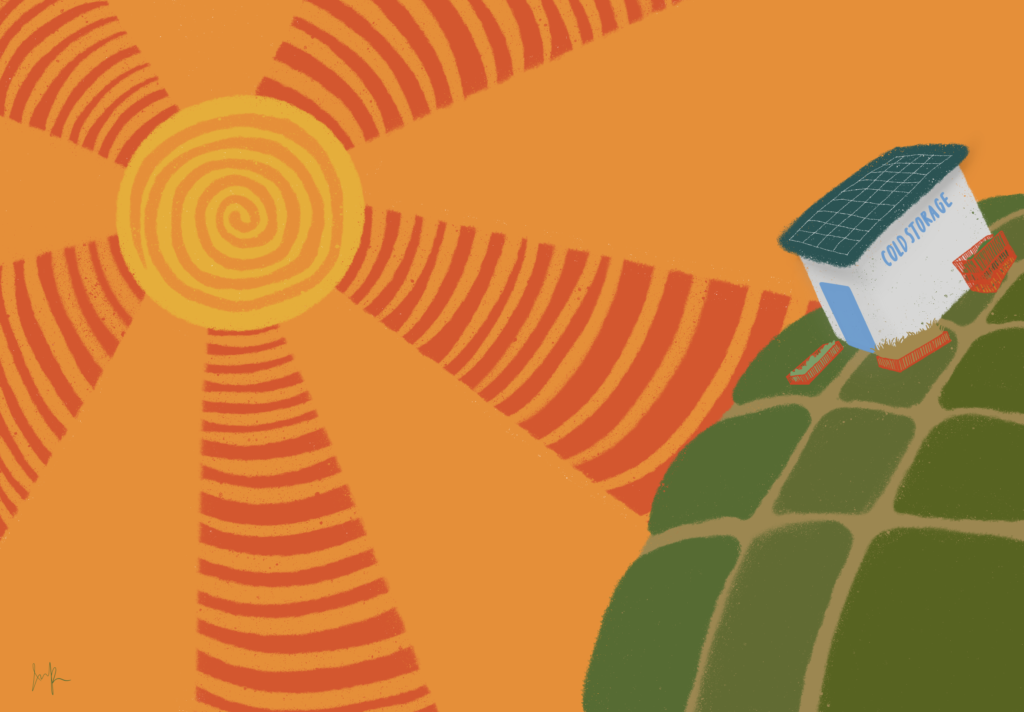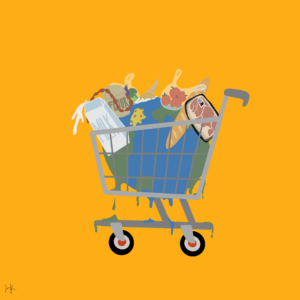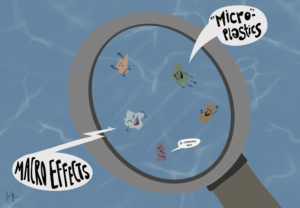
If you’ve ever visited the farmland of India’s marginalized communities, you’ve probably noticed that food waste is a significant issue. Hundreds of pounds of spoiled bananas, peppers, wheat, sugarcane, and various other crops are discarded daily, cluttering fields and leading to considerable food waste. This waste eventually decomposes, producing methane and significantly increasing the rate of global warming. According to the Environmental Protection Agency, food loss creates “170 million metric tons of carbon dioxide equivalent (million MTCO2e) GHG emissions (excluding landfill emissions) – equal to the annual CO2 emissions of 42 coal-fired power plants.” Beyond this, food waste also contributes to resource depletion, as it is the product of large amounts of water, gas, energy, land, and human labor—all used without purpose when food is thrown away; instead, they could be allocated to ameliorating privation and providing people with basic necessities. The UN estimates that a staggering two billion could be fed if our food was being used for consumption rather than for exacerbating the climate catastrophe. Food Safety and Standard Authorities of India (FSSAI) states that one-third of food produced in India, a total of 68.76 billion kilograms in produce, is either wasted or spoiled before consumption—making India one of the primary producers of food waste. The leading determinant of this appears to be the lack of storage facilities that continues to plague farmers.
Because crops spoil quickly, Indian farmers are pressured to sell their produce immediately upon harvest. And if crops haven’t sold within a given timeframe, they are discarded. Thus, farmers sell for extremely low prices, stunting their income and intergenerational mobility. The hundreds of rupees used for transportation and months of agricultural work can lead to less than two rupees per kilo of produce for the average disadvantaged farmer in Gujarat, India—leaving farmers burdened by debt and barely able to break even. Therefore, farmers are forced to use heavy amounts of pesticides and fertilizers to increase crop yield to sustain their practices. Although the country is the second-largest producer of fruits and vegetables, approximately 30 to 40 percent is wasted due to supply chain and infrastructure issues. These people require a solution that would extend the shelf life of produce while being cost-effective, sustainable, and viable on a national scale.
CoolCrop, a startup based in Gujarat, India, is solving this issue by providing low-income Indian farmers with solar-powered cold storage facilities. These facilities can store up to 4 thousand kilograms of produce at a time, with temperatures and storage periods being customizable through a comprehensive mobile app. Built into the app is a predictor for estimated post-harvest market prices, which would allow farmers to better understand how they can sell their products more efficiently. Using these facilities, farmers could extend the life of their yields and greatly increase their revenue while also preventing unnecessary waste and methane emissions. Because they utilize solar energy exclusively for energy, this system does not contribute to global
warming and is geared toward sustainability and longevity. This also removes the issue of cost, as solar energy is much cheaper to implement than coal, gas, or oil-powered facilities. By charging only 50 paise per kilogram per day, approximately half a rupee, CoolCrop is making its facilities as accessible as possible to farmers. As of 2023, CoolCrop has installed 43 systems across nine states in India, serving an incredible nine thousand farmers and increasing individual incomes by 35 percent. They’ve also helped reduce individual food waste by more than 20 percent, resulting in roughly 600 thousand kilograms of produce saved annually.
So, given the incredible growth as a result of adopting cold storage facilities, what is stopping India from implementing this solution on a broader scale? For starters, many rural farming areas simply lack the infrastructure required to support them. Government support for building storage facilities is insufficient, and townships are left to fund and maintain them year-round. Because farmers are typically lower-income, they do not have the means to invest in the required equipment. As such, this solution is incredibly reliant on cooperation from India’s government. Infrastructure projects to build these systems must be established across the country, and logistical requirements discussed with farmer unions. These projects will also work to increase employment and career avenues for impoverished individuals, as instituting these facilities will require human labor. Most importantly, however, we can significantly decrease methane emissions in India by providing farmers with a way to store their food instead of disposing of them. The thousands of gallons of water, the years of arduous labor in crop fields, and the enormous amount of energy required for transportation will not be wasted if this solution is initiated successfully.
India’s National Crime Records Bureau estimates that an average of 28 Indian farmers commit suicide every day due to financial hardships. Children are pulled out of school because their families cannot support the cost of education, and India’s intergenerational mobility is plunging as a result of this. By establishing this solution across India, we can create more opportunities for underprivileged farmers while also aiding in the betterment of the environment.
Sources:
Environment, U. (n.d.). UNEP Food Waste Index Report 2021. UNEP.
https://www.unep.org/resources/report/unep-food-waste-index-report-2021
Buzby, P. by J. (2022, January 24). Food waste and its links to greenhouse gases and climate change. USDA.
https://www.usda.gov/media/blog/2022/01/24/food-waste-and-its-links-greenhouse-gases-a nd-climate-change#:~:text=EPA%20estimated%20that%20each%20year,42%20coal%2Dfi red%20power%20plants.
Agriculture, D. M. F. &, Melgar, D., & Agriculture, F. &. (2023a, May 26). How much food does america waste and what can we do to stop it?. PIRG.
https://pirg.org/articles/how-much-food-does-america-waste-and-what-can-we-do-to-stop-i t/#:~:text=That%20adds%20up%20to%20around,don’t%20end%20up%20using.
Cold storages for villages: A mini answer from coolcrop. Civil Society Magazine. (n.d.). https://www.civilsocietyonline.com/business/cold-storages-for-villages-a-mini-answer-fro m-coolcrop/
National Crime Records Bureau. (n.d.).
https://ncrb.gov.in/sites/default/files/ADSI-2021/ADSI_2021_FULL_REPORT.pdf
Illustration by: Julianne Park
All rights reserved.
The views and opinions expressed are those of the authors and do not necessarily reflect nor represent the Earth Chronicles and its editorial board.








